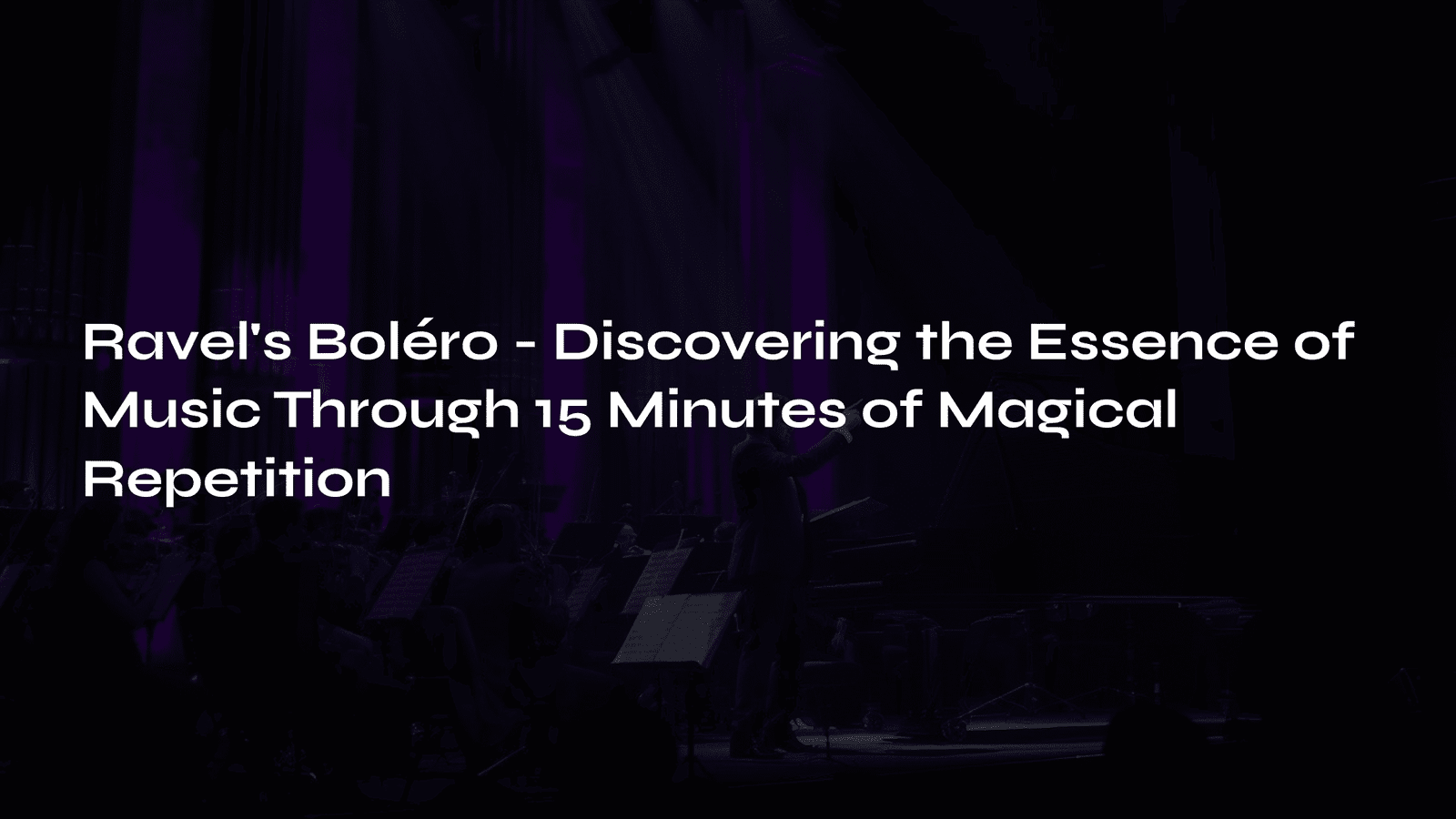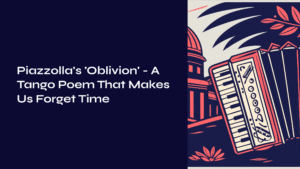Table of Contents
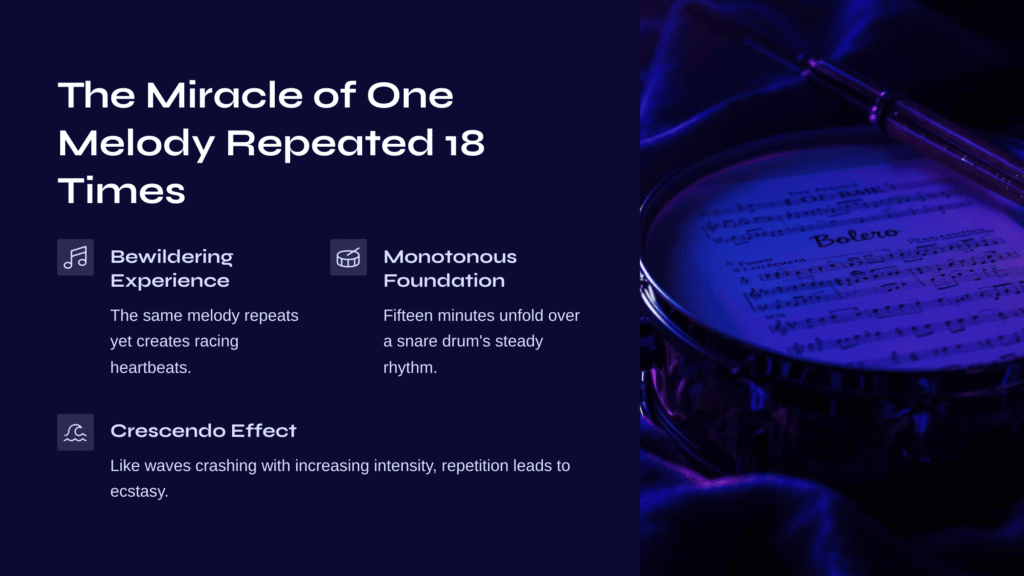
The Miracle of One Melody Repeated 18 Times
I remember the bewilderment I felt when I first heard it. The same melody kept repeating, yet why did my heart race so? A fifteen-minute journey unfolding over the monotonous rhythm of a snare drum. Ravel’s Boléro is a work that shatters our preconceptions about what music should be.
The act of repetition. That it can lead not to boredom but to ecstasy—no piece of music demonstrates this more clearly than this one. Like waves crashing against the shore with ever-increasing intensity, Boléro guides us through repetition into a realm of profound immersion.
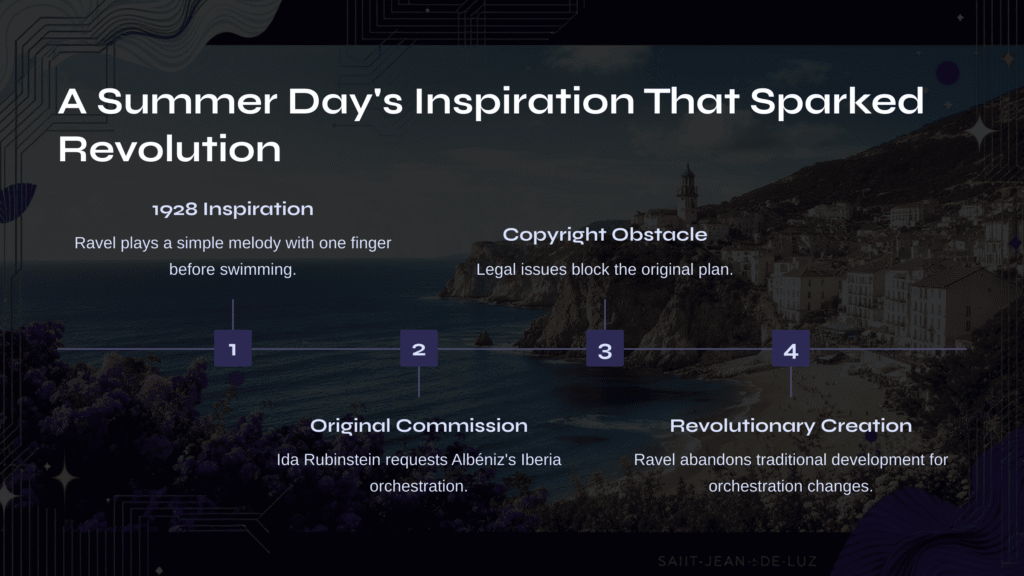
A Summer Day’s Inspiration That Sparked Revolution
It was 1928, and Ravel was about to go swimming in Saint-Jean-de-Luz when it happened. Suddenly, he called over a friend, sat him at the piano, and played a simple melody with one finger. “Don’t you think this theme has an insistent quality? I want to try repeating it many times without any development, gradually building up the orchestra.”
That moment of inspiration marked the beginning of a revolution in music history. Originally commissioned by Ida Rubinstein to orchestrate Albéniz’s Iberia, the project was blocked by copyright issues. But sometimes obstacles open doors to even greater creation.
Ravel completely abandoned traditional methods of musical development. Without harmonic changes or melodic variations, he crafted a fifteen-minute epic using only changes in orchestration. Though the composer himself dismissed it as “orchestral tissue without music,” we understand the confidence hidden behind that modesty.
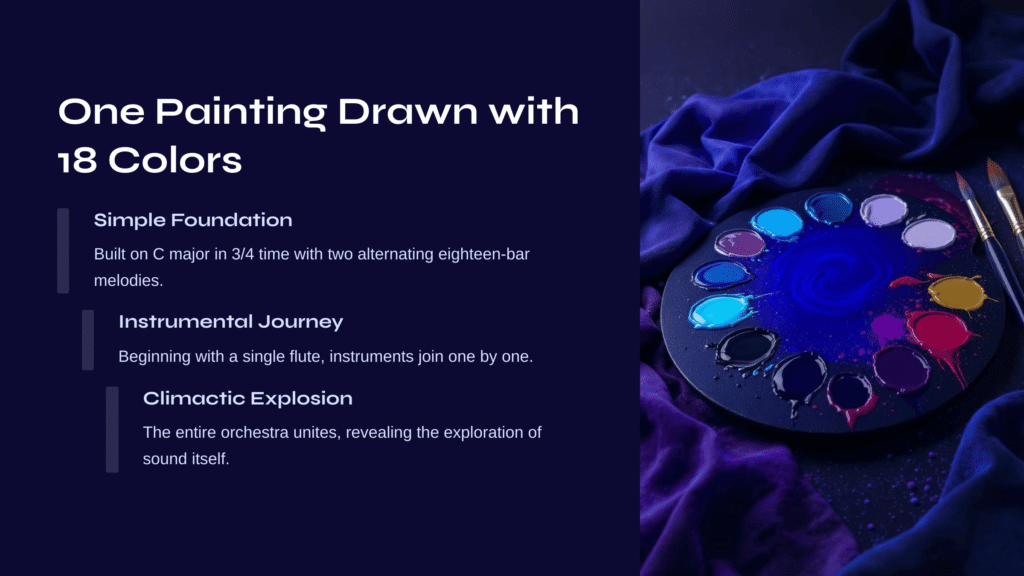
One Painting Drawn with 18 Colors
Boléro is a massive architectural structure built upon the simplicity of C major in 3/4 time. Two eighteen-bar melodies alternate throughout, each played twice before giving way to its counterpart. Yet the melodies themselves never change from beginning to end. Only the combinations of instruments playing them transform.
It begins with a single flute whispering the melody. The soft sound flowing from its lower register is like a song emerging from dawn mist. Then come the clarinet, bassoon, and oboe, each taking the stage in turn.
The sensual tremor when the saxophone enters. The restrained cry of the muted trumpet. The waves created as strings join one by one. Ravel arranges each instrument’s unique timbre with the precision of a painter selecting colors from a palette.
In the final climactic moment when the entire orchestra explodes in unison, we finally understand: this was not mere repetition, but an experiment in exploring the materiality of sound itself.
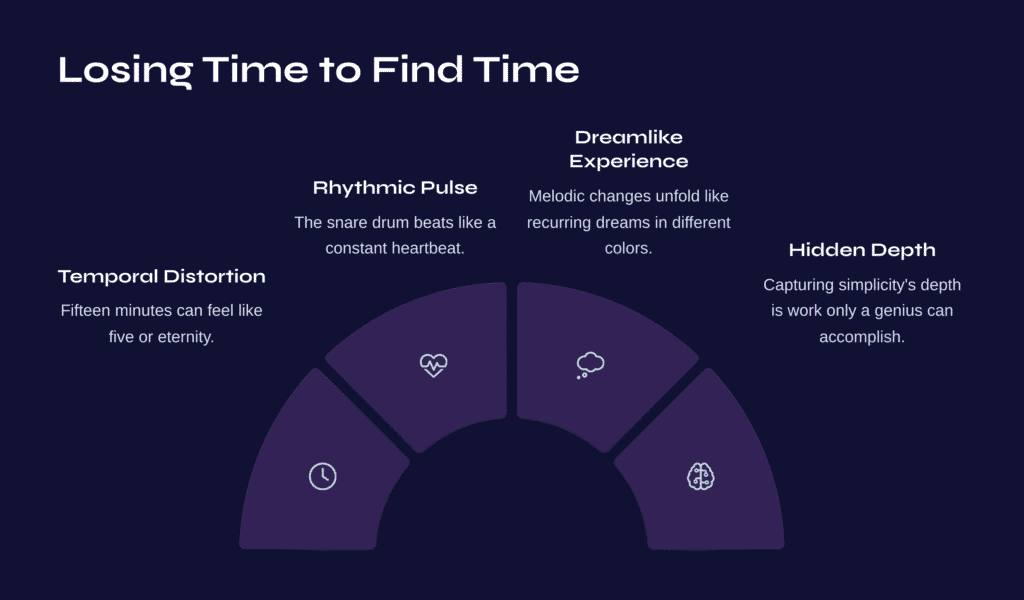
Losing Time to Find Time
While listening to Boléro, I often lose my sense of time. Fifteen minutes can feel like five, or sometimes like eternity. This is the magic that repetition creates. The repetition of sameness liberates us from ordinary time and transports us into another dimension of temporal experience.
The relentless rhythm of the snare drum is like a heartbeat. The melodic changes unfolding above it are like stories playing out in dreams. We dream the same dream repeatedly, yet each time it approaches us in slightly different colors, with different emotions.
Perhaps even Ravel himself didn’t fully understand the spell his creation would cast. Though the composer claimed “any conservatory student could have done as well,” no one has ever created another work like Boléro. Capturing the depth hidden within simplicity—that is work only a genius can accomplish.
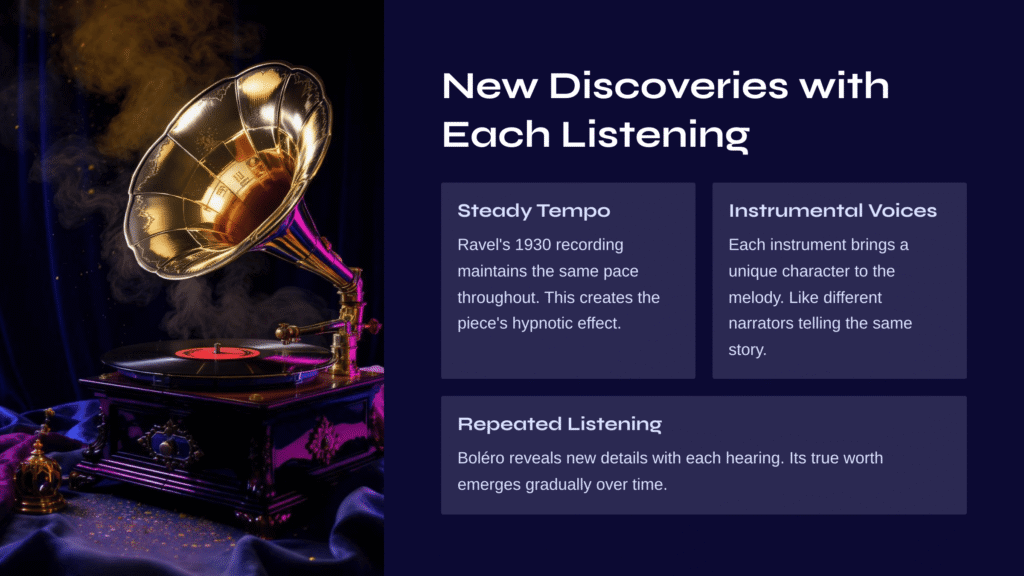
New Discoveries with Each Listening
To properly appreciate Boléro, there are several key points to consider.
First, pay attention to the tempo. Listening to Ravel’s own 1930 recording reveals that he maintained virtually the same pace from beginning to end. Neither accelerating nor slowing—this steady tempo is the key to Boléro’s hypnotic effect.
Second, listen carefully to each instrument’s entrance. The same melody feels completely different when played by flute versus bassoon, or when performed by saxophone. It’s like hearing the same story told by different narrators.
Third, embrace the value of repeated listening. Boléro is a piece whose true worth cannot be grasped in a single hearing. With each subsequent listen—second, third, and beyond—details previously missed reveal themselves one by one. This is the aesthetic of repetition.
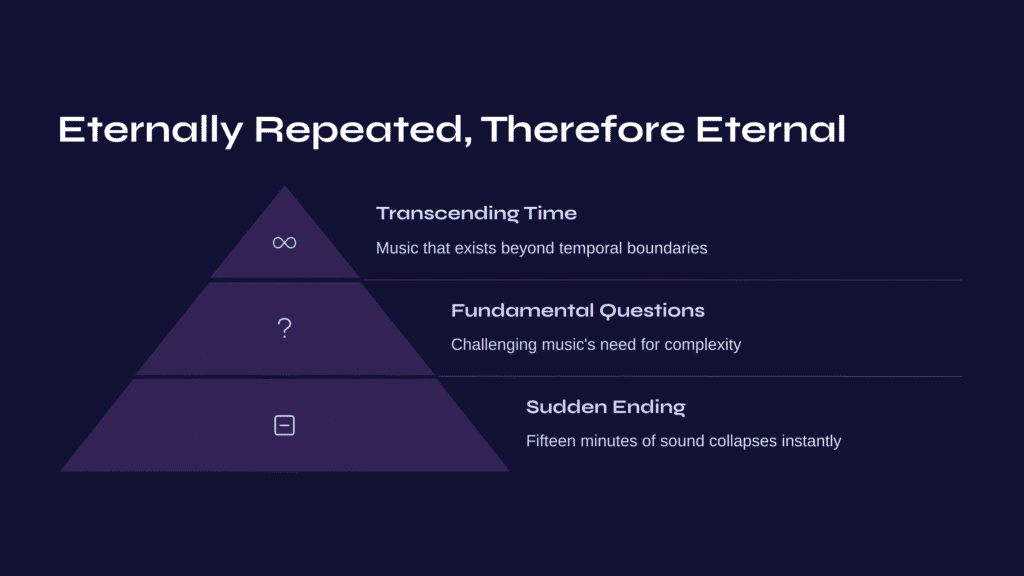
Eternally Repeated, Therefore Eternal
Boléro’s ending comes suddenly. The massive tower of sound built over fifteen minutes collapses in an instant. In that lingering silence, we ask ourselves: what was it that we just experienced?
Through this piece, Ravel posed fundamental questions about the nature of music. Can music exist without complex harmonies and intricate structures? Can repetition alone move us to tears? Boléro answers all these questions with a resounding “yes.”
In fifteen minutes of repetition, we forget the passage of time. And we realize once again that music is an art that transcends time itself. Repeating the same yet never truly the same, simple yet never truly simple—Boléro is the greatest riddle and gift that Ravel left us.
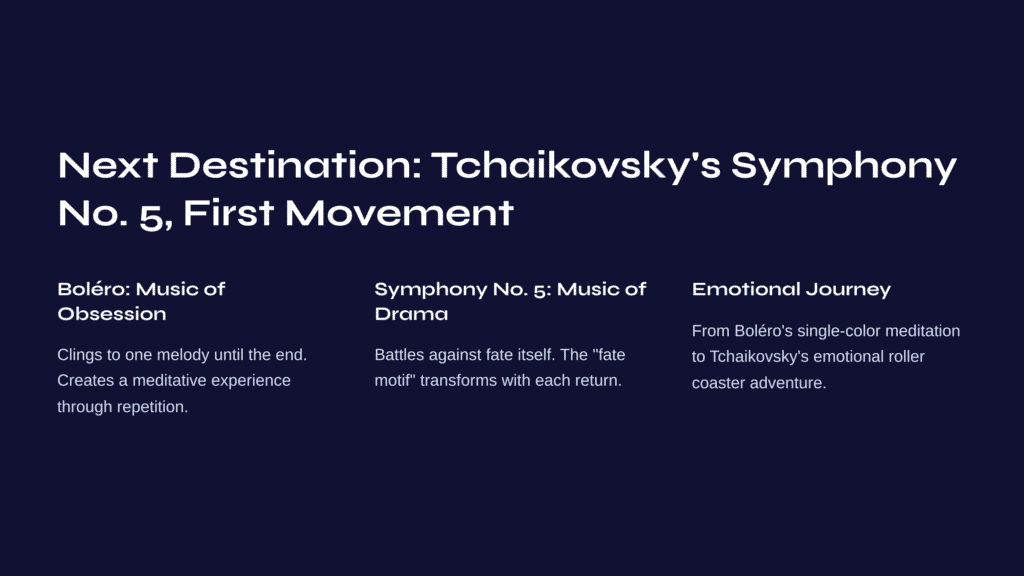
Next Destination: Tchaikovsky’s Symphony No. 5, First Movement
Having emerged from Boléro’s hypnotic repetition, let us now journey to a completely different world. Tchaikovsky’s Symphony No. 5, First Movement offers attractions that are the polar opposite of Boléro’s.
If Boléro is music of obsession, clinging to one melody until the very end, then Tchaikovsky’s Fifth is music of drama, battling against fate itself. The “fate motif” that begins with a clarinet’s whisper represents a different kind of compulsion than Boléro’s repetition. Each time the same theme returns, it transforms into a different character—sometimes threatening, sometimes despairing, finally becoming a hymn of victory.
If you’ve just experienced Boléro’s fifteen minutes painted in one color, now is the time to ride the emotional roller coaster of Tchaikovsky’s world, where dozens of emotions intersect over fifteen minutes. If Boléro was meditation, Tchaikovsky’s Fifth is adventure.
